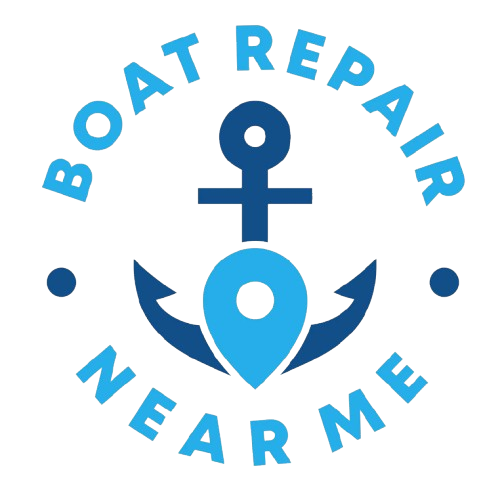Getting a boat repair estimate can feel like decoding a foreign language. Between line-item labor rates, hazy materials lists, and vague “shop time,” it’s hard to know whether you’re being charged fairly—or taken for a ride. This guide breaks down exactly how repair shops build their estimates, with real-world examples to help you spot value, avoid overpaying, and ask the right questions.
Jump To:
TL;DR – Quick Guide
- Boat repair estimates typically include diagnostic time, hourly labor, parts/materials, and markup.
- Labor rates in coastal areas average $100–$150/hr depending on service type (mechanical vs. fiberglass).
- Material costs often include a 25–50% markup to cover sourcing, handling, and waste.
- Complex jobs (like engine rebuilds) are billed by the hour + flat rate for specialty parts.
- Always ask for a detailed breakdown to separate labor from parts and shop fees.
Core Components of a Boat Repair Estimate
Diagnostic & Evaluation Time
Before repairs even begin, most shops charge for a diagnostic inspection. This might be a flat fee ($75–$150) or rolled into the labor if work proceeds. It covers the tech’s time to inspect damage, test systems, and write up a repair plan.
Hourly Labor Rates
This is where costs add up fast. Labor is charged hourly and can vary based on service type:
- Fiberglass or gelcoat repair: $95–$120/hr
- Mechanical engine work: $110–$150/hr
- Electrical or marine electronics: $120–$160/hr
Skilled techs or certified marine mechanics command higher rates—and rightly so.
Materials, Parts, and Supplies
From resin and paint to hoses and wiring, all parts are itemized or bundled. Shops often mark these up 25–50% to cover sourcing time, shipping, and inventory management. Don’t be surprised to see even minor parts add up quickly on complex repairs.
Flat-Rate Tasks vs. Time-Based Work
Some services come with a flat-rate model (e.g., haul-out, prop replacement, oil change). Others are time-based because the scope is unpredictable—especially if the damage is hidden (like under fiberglass or inside an engine casing). The estimate should clearly state which is which.
Shop Fees and Disposal Costs
You may see environmental fees, hazardous material disposal charges, or shop supplies lumped into a flat fee (usually $20–$50). These are standard and cover gloves, tape, rags, and other consumables.
Examples: Breaking Down Real Boat Repair Estimates
Example 1: Fiberglass Hull Crack Repair
- Diagnostic inspection: $95
- Labor (6 hours @ $110/hr): $660
- Materials (resin, gelcoat, sandpaper): $160
- Shop fee: $30
Total Estimate: $945
Example 2: Engine Overheat and Water Pump Replacement
- Diagnostic fee: Waived if job proceeds
- Labor (4.5 hrs @ $125/hr): $562.50
- Parts (pump kit, gasket set): $210 (with markup)
- Shop fee: $25
Total Estimate: $797.50
Example 3: Canvas Snap Replacement + Minor Stitching
- Labor (1.5 hrs @ $95/hr): $142.50
- Parts (stainless snaps, UV thread): $35
Total Estimate: $177.50
What You Can (and Should) Ask for
Itemized Breakdowns
A good estimate will separate labor, materials, and fees. This transparency helps you compare quotes and spot padding.
Scope of Work & Time Estimate
Understand if you’re getting a fixed quote or a time-based estimate. Ask what happens if the job runs over—some shops will cap labor, others won’t.
Labor Warranty
Always ask if the shop guarantees its labor. Most reputable outfits will cover work for 30–90 days minimum, especially on engine or systems repairs.
Key Takeaways
- A boat repair estimate isn’t just about parts—it includes skilled labor, shop resources, diagnostics, and risk.
- Labor rates can vary widely by service type, so know what you’re paying for.
- Materials are often marked up, but a transparent breakdown helps ensure fairness.
- Ask for detailed line items, warranties, and clarity between flat-rate vs. time-based billing.
- Understanding the structure of an estimate empowers you to manage costs and avoid surprises.
FAQs
Why are boat repair labor rates higher than auto mechanics?
Marine environments are more complex—salt, vibration, and limited access make every job harder. Plus, certified marine techs are specialized in systems not found in cars. That expertise costs more but is essential for safe, lasting repairs.
What’s a typical markup on materials in a boat repair estimate?
Shops often add a 25–50% markup to cover sourcing, shipping, and handling costs. While it may seem high, this also compensates for waste and storage. Always request an itemized list to see where the costs go.
Can I provide my own parts to lower the estimate?
Some shops allow it, but many won’t guarantee work if you supply the parts. Liability and quality control become issues. If allowed, make sure parts meet OEM standards.
Why does labor time vary between similar repairs?
Each boat is different—even within the same model year. Access points, corrosion, previous work, or hidden damage can add hours. Estimates are just that: educated guesses based on known variables.
Should I always get multiple estimates before approving work?
Yes—especially for major repairs over $1,000. Multiple quotes help you compare not just price but thoroughness, warranty, and shop credibility. Just don’t automatically go for the cheapest—ask what’s included and who’s doing the work.
